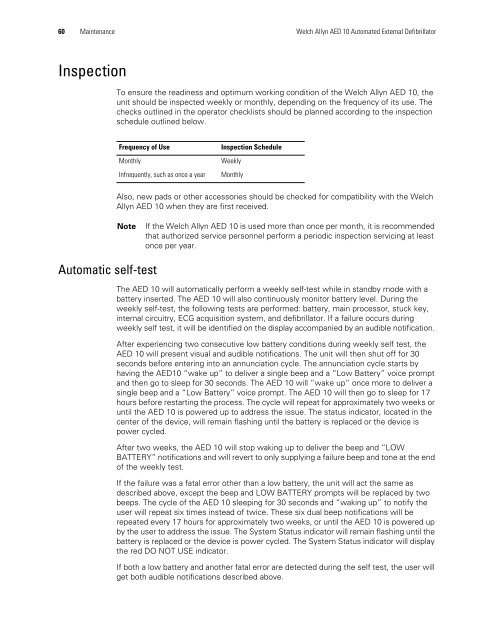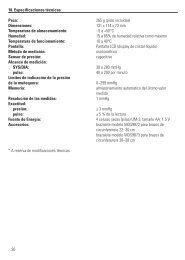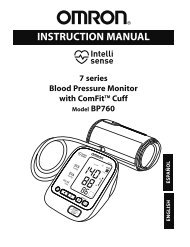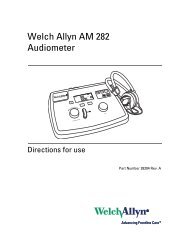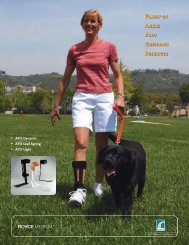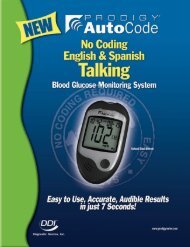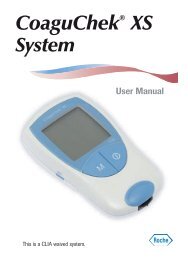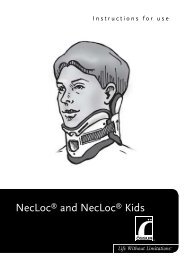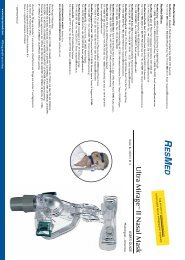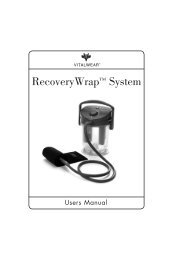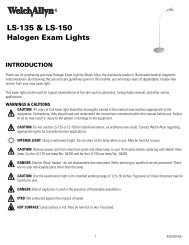AED 10 User Manual - Welch Allyn
AED 10 User Manual - Welch Allyn
AED 10 User Manual - Welch Allyn
You also want an ePaper? Increase the reach of your titles
YUMPU automatically turns print PDFs into web optimized ePapers that Google loves.
60 Maintenance <strong>Welch</strong> <strong>Allyn</strong> <strong>AED</strong> <strong>10</strong> Automated External DefibrillatorInspectionTo ensure the readiness and optimum working condition of the <strong>Welch</strong> <strong>Allyn</strong> <strong>AED</strong> <strong>10</strong>, theunit should be inspected weekly or monthly, depending on the frequency of its use. Thechecks outlined in the operator checklists should be planned according to the inspectionschedule outlined below.Frequency of UseMonthlyInfrequently, such as once a yearInspection ScheduleWeeklyMonthlyAlso, new pads or other accessories should be checked for compatibility with the <strong>Welch</strong><strong>Allyn</strong> <strong>AED</strong> <strong>10</strong> when they are first received.NoteIf the <strong>Welch</strong> <strong>Allyn</strong> <strong>AED</strong> <strong>10</strong> is used more than once per month, it is recommendedthat authorized service personnel perform a periodic inspection servicing at leastonce per year.Automatic self-testThe <strong>AED</strong> <strong>10</strong> will automatically perform a weekly self-test while in standby mode with abattery inserted. The <strong>AED</strong> <strong>10</strong> will also continuously monitor battery level. During theweekly self-test, the following tests are performed: battery, main processor, stuck key,internal circuitry, ECG acquisition system, and defibrillator. If a failure occurs duringweekly self test, it will be identified on the display accompanied by an audible notification.After experiencing two consecutive low battery conditions during weekly self test, the<strong>AED</strong> <strong>10</strong> will present visual and audible notifications. The unit will then shut off for 30seconds before entering into an annunciation cycle. The annunciation cycle starts byhaving the <strong>AED</strong><strong>10</strong> “wake up” to deliver a single beep and a “Low Battery” voice promptand then go to sleep for 30 seconds. The <strong>AED</strong> <strong>10</strong> will “wake up” once more to deliver asingle beep and a “Low Battery” voice prompt. The <strong>AED</strong> <strong>10</strong> will then go to sleep for 17hours before restarting the process. The cycle will repeat for approximately two weeks oruntil the <strong>AED</strong> <strong>10</strong> is powered up to address the issue. The status indicator, located in thecenter of the device, will remain flashing until the battery is replaced or the device ispower cycled.After two weeks, the <strong>AED</strong> <strong>10</strong> will stop waking up to deliver the beep and “LOWBATTERY” notifications and will revert to only supplying a failure beep and tone at the endof the weekly test.If the failure was a fatal error other than a low battery, the unit will act the same asdescribed above, except the beep and LOW BATTERY prompts will be replaced by twobeeps. The cycle of the <strong>AED</strong> <strong>10</strong> sleeping for 30 seconds and “waking up” to notify theuser will repeat six times instead of twice. These six dual beep notifications will berepeated every 17 hours for approximately two weeks, or until the <strong>AED</strong> <strong>10</strong> is powered upby the user to address the issue. The System Status indicator will remain flashing until thebattery is replaced or the device is power cycled. The System Status indicator will displaythe red DO NOT USE indicator.If both a low battery and another fatal error are detected during the self test, the user willget both audible notifications described above.


